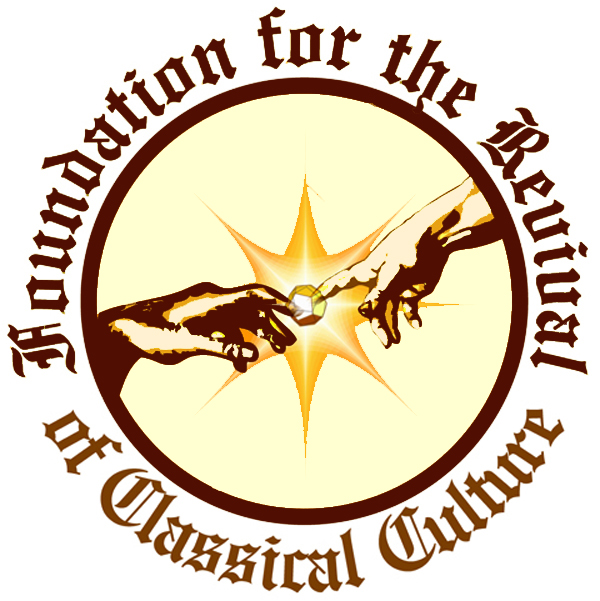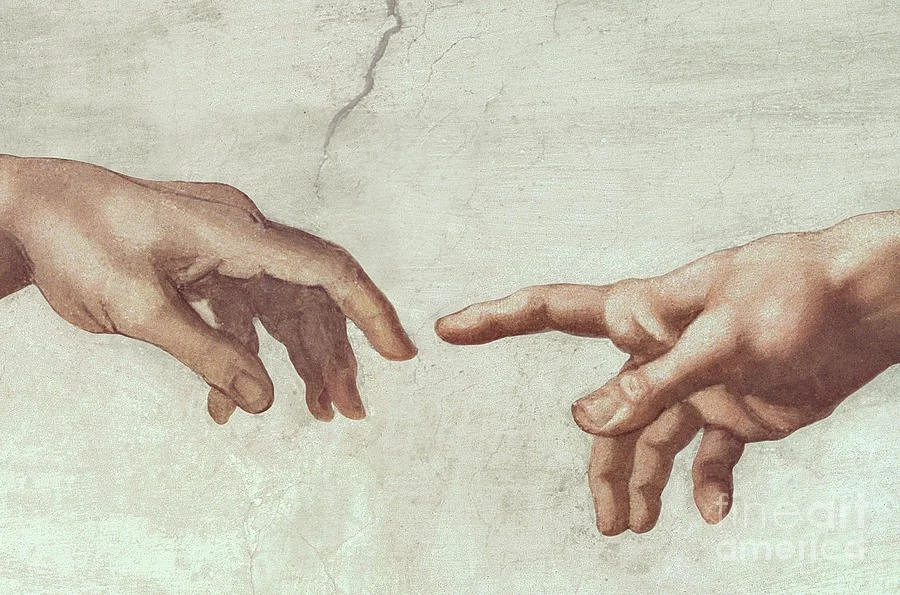Classical Principle Weekly
April 25, 2023
HAPPY BIRTHDAY, SERGEI RACHMANINOFF
A great Russian, and a lover of America
The world recently celebrated the 150th Anniversary of this great composer, even though it took a while for the world to have a true appreciation of his genius.
Rachmaninoff is often interpreted as the "last of the Romantic composers", when, in fact, he was one of the last in maintaining the classical tradition. His All-Night Vigil (Vespers) was little-known in his lifetime. The Soviet Union had banned religious music, and produced only one recording of it, which sounds like the Red Army marching. He had requested that the 5th song in this work be played at his funeral. It was not, and had to wait for Robert Shaw to revive the Vespers in the 1980's. We will end with that work.
For a long time Rachmaninoff's works were dismissed as Romantic and "gushing melodies." His younger compatriot, Igor Stravinsky said of him, "He was a six and a half foot tall scowl” and that "he painted watercolors, in imitation of Tchaikovsky, and later, at the age of 25, turned to oils, and became a very old composer indeed." Rachmaninoff seemed to many, as stuck in the past, while new and vibrant ideas were flowing forth.
Often omitted, is the second part of Stravinsky's quote:
"But, do not expect me to denigrate him for that. In fact he was an awesome man, and there are too many others to be denigrated long before him."
Rachmaninoff had stated that he tried to compose in the style of the 20th century, but his heart was just not in it. Thank God for that! His talent was anchored in the Russian bel-canto tradition, and his technique owed a lot to his counterpoint teacher, Sergei Taneyev. Taneyev, a student of Tchaikovsky, wrote huge treatises on formal counterpoint, and became a mentor to his own teacher,Tchaikovsky. The Russian bel-canto tradition had its origins in liturgical "a capella" choral music. The St Petersburg Imperial Chapel Choir was known as one of the best in the world, and was developed with the help of Italian opera composers, as Czar Peter the Great sought not only to westernize Russia, but do something new, and unprecedented. (see photos). The chorus was trained in the best Italian bel-canto technique.
Tchaikovsky helped to launch a program to elevate the Moscow Synodal Choir to the same heights as St Petersburg, under the leadership of the great Stepan Smolensky. Rachmaninoff was only one of the many composers and conductors involved in the project for decades. This great chorus was a "sensuous laboratory" where many conductors learned to compose.
Settings of Russian hymns by both great and minor composers are almost always gorgeous. It is a long-standing tradition. This is as simple as a hymn can be:
TEBE POEM (We "hymn" thee.)
Тебе поем,
Тебе благословим,
Тебе благодарим, Господи,
и молим Ти ся, Боже наш
Tebe poem
Tebe blagoslovim
Tebe blagodarim, Gospodi
I molim Ti sia, Bozhe nash.
We sing to you,
we praise you,
we thank you, O Lord,
and we pray to you, our God.
Now, please listen to four great settings of that same hymn, over 100 years, and ask yourself how they all could be so incredibly beautiful?
1. Dmitro Bortniansky circa 1810
https://youtu.be/OesNR8FQGDs
2. Peter Ilich Tchaikovsky 1880
https://youtu.be/kW7oH6jbPf8
3. Sergei Rachmaninoff 1910
This recording includes a short introduction. The piece proper begins at 1:12. In this work, a boy soprano is better than an adult soprano. Please forgive the visual's recruiting for the church.
https://youtu.be/cGJD_b5DSyI
4. Pavel Chesnikov remains relatively unknown. He was a conductor who learned to compose by conducting the great chorus—the Moscow Synodal Choir. He stayed in the USSR to try and keep the tradition alive. The Russian a capella choruses developed choral orchestration, including oktavists—very low basses. The great oktavist Vladimir Pasyukov sings in this recording of Chesnikov's Tebe Poem. He does not growl. The lowest notes sing beautifully!
Russia produced not only great choruses, but soloists. The tenor Ivan Kozlovsky sang Rachmnaninoff's songs beautifully. Here we present him singing a folk song with incredible nuance, while accompanying himself on guitar.
https://youtu.be/n5SxLw2ea8A
Kozlovsky was a proud Ukrainian, who sang many Ukrainian folk songs, but also performed for Soviet troops going into battle in WW II. Stalin gave him an award for purchasing a tank for the war effort. Russia and the US were allies in those days. Most Ukrainians joined the Red Army to fight Hitler.
PIANO
The Russian piano tradition was also bel-canto. Listen to Rachmaninoff play Chopin's Nocturne, Op 9, # 2, and hear how he treats it as an aria, unlike so many modern performances.
https://youtu.be/kj3CHx3TDzw
His version of Chopin's Grand Valse Brillante, Op. 18, displays a sense of humor, also lacking in many modern performances. He adds a short phrase to Chopin. See if you can detect it, and tell us if it detracts from the piece, or adds to it. (to be honest, his alterations of Bach sometimes showed poor taste.) Here, he, as composer, was in the service of another great composer.
https://youtu.be/Fk7eZR1fdx8
Many people insist that other pianists play his works better than he did. We often find his performances of his own works to be the best. Take a modern performance of the Etude tableaux Op. 39, No. 6. Does it sound like it's about "Little Red Riding Hood."
https://youtu.be/tVuP1BjbhAg
Now, let the composer, a loving grandfather, play it: https://youtu.be/GUb6Jsnepe4
While in the United States, conductors such as Eugene Ormandy appreciated the
Russian tradition of the full and rich string sounds in the orchestra (The author got to appreciate that when Yuri Temirkanov was conducting the Baltimore Symphony). Here he is playing the second movement of his Second Piano Concerto with Leopold Stokowski.
https://youtu.be/GnqytVlbNL8
He loved the United States, and loved automobiles, but had difficulty composing without the inspiration of his beloved Russia. While in the US though, he composed his "Rhapsody on a Theme of Paganini". The 18th variation is sometimes played at romantic slop,
https://youtu.be/ThTU04p3drM
but see if you can hear it as a variation on Paganini's Capriccio 24, which is itself a “Theme and Variations.”
https://youtu.be/UcL0IsklM3M
Brahms had made two sets of variations on this work
Rachmaninoff loved jazz, and his15th Variation is based on the great Jazz pianist Art Tatum.
Here is Rachmaninoff's 15th Variation
https://youtu.be/u4jcTQZecUY
and here is Art Tatum's "Theme for Piano"
https://youtu.be/cC9WXLG5cVM?list=PLA3354DFAD8257C1C
In his older recordings Rachmaninoff brings out the different human voices in the piano. Listen to the middle section of his Prelude in g minor, beginning at 1:15.
It stands out even on the Ampico player piano recordings.
https://youtu.be/M8RyWFA7PSY
The Andante of his Cello Sonata is too often played Adagio, another Romantic distortion. These two musicians take a tempo closer to what is indicated in the score. The movement explores the interval of the fifth as divided at the major and minor thirds.
https://youtu.be/k_aBwXWGyrs
Earlier settings of Russian liturgy ignored the chants, and celebrated the spirit of the text. Stepan Smolensky, head of the Moscow Synodal Choir insisted that composers keep the chants intact, as Bach had done with Lutheran Hymns. Many did so, but only Rachmaninoff could really pull it off. This is the song he wished to be played for his funeral, St Simeon's Prayer.
Ны́не отпуща́еши раба́ Твоего́, Влады́ко, по глаго́лу Твоему́ с ми́ром;
я́ко ви́деста о́чи мои́ спасе́ние Твое́,
е́же еси́ угото́вал пред лице́м всех люде́й,
свет во открове́ние язы́ков, и сла́ву люде́й Твои́х Изра́иля.
Nyne Otpushchaeshi raba Tvoego, Vladyko,
po glagolu Tvoyemu s mirom:
yako videsta ochi moi spaseniye Tvoye,
ezhe esi ugotoval pred litsem vsekh lyudei,
svet vo otkrovenie yazykov, i slavu lyudei Tvoikh Izrailya.
Lord, now lettest thou thy servant depart in peace according to thy word.
For mine eyes have seen thy salvation,
Which thou hast prepared before the face of all people;
To be a light to lighten the Gentiles and to be the glory of thy people Israel.
Rachmaninoff's setting keeps the entire chant intact. He dedicated the All Night Vigil (Vespers) to Smolensky. The basses sink to a breathtaking low Bb at the end.



